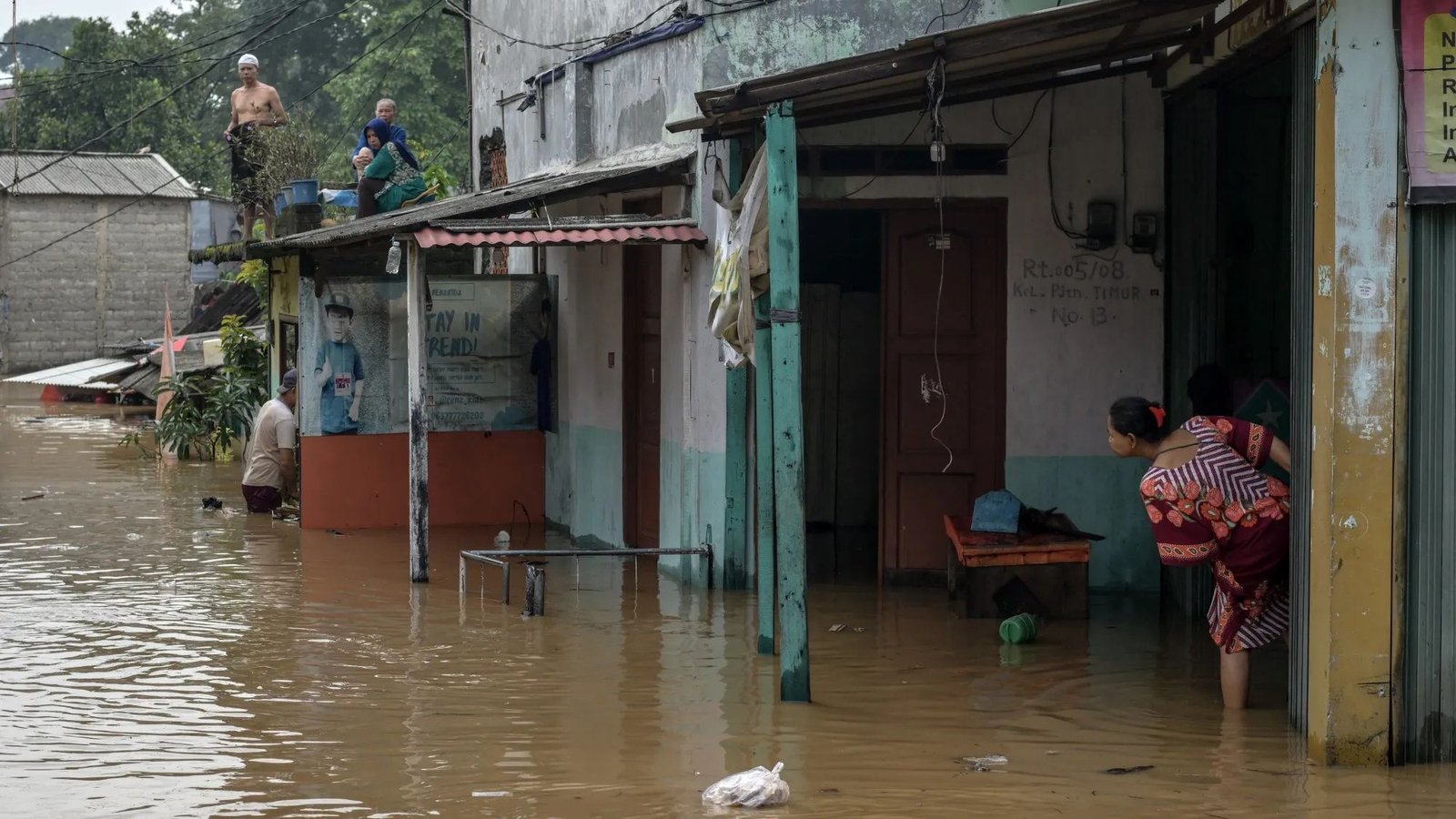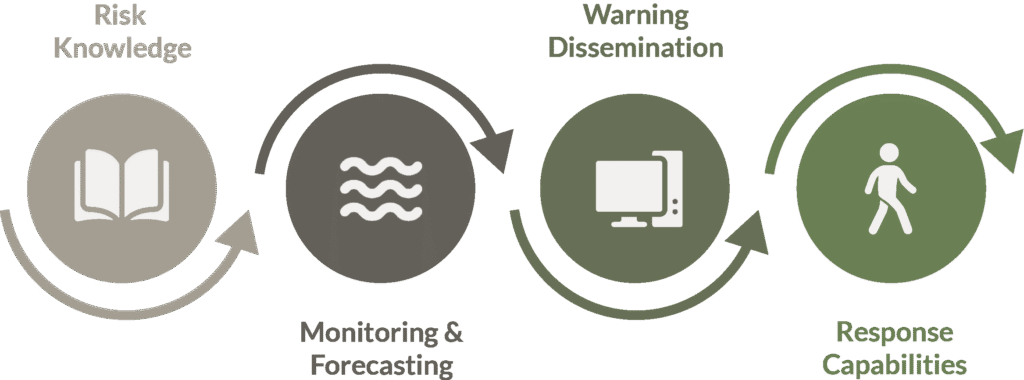
Flood Early Warning System (FEWS): What It Is and How It Works

Flood Early Warning System (FEWS): What It Is and How It Works
Floods are among the most frequent and devastating natural disasters globally—and their impact is only increasing. According to the Emergency Events Database (EM-DAT), more than 5,000 water-related disasters occurred worldwide between 2000 and 2018, accounting for nearly 74% of all natural disasters during that period. Floods alone made up over half (54%) of these events1, highlighting the urgent need for effective measures such as a Flood Early Warning System to reduce their impact.
Asia has been particularly vulnerable, experiencing 41% of all flood-related disasters, with Indonesia ranking among the hardest-hit countries, recording over 100 flood events since 2000. These figures underscore a sobering reality: as flood risks grow, so must our capacity to anticipate and respond to them.
That’s where Flood Early Warning System (FEWS) come into play. But what exactly is FEWS—and what makes it work?
Table of Contents
ToggleI. Understanding Flood Early Warning System : More Than Just Technology
A Flood Early Warning System is a coordinated set of tools and practices designed to detect, forecast, and communicate flood threats in advance—giving people and institutions time to prepare and respond. However, a truly effective FEWS is more than just a collection of sensors or models. It’s a people-centered system built on four interconnected components, or pillars, as recognized by the United Nations Office for Disaster Risk Reduction (UNDRR) and the World Meteorological Organization (WMO)2.
II. The 4 Pillars of a Modern Flood Early Warning System
Let’s explore each of these four pillars:

A. Risk Knowledge
This is the first pillar – Risk Knowledge. Understanding flood risk starts with knowing who and what is at risk. This includes flood hazard mapping, vulnerability assessments, and the analysis of historical flood data. By building solid risk knowledge, warnings can be targeted and relevant, ensuring that limited resources are directed toward the most exposed and vulnerable communities.
B. Monitoring & Forecasting
The second pillar – Monitoring & Forecasting. This pillar is all about detecting and predicting flood threats in real time. It relies on a combination of hydrological and meteorological data, collected through rainfall gauges, river sensors, satellite imagery, and forecasting models. The goal is to produce timely, accurate forecasts that support early decision-making and proactive action—not just reaction.
C. Warning Dissemination
Let’s follow it up with Warning Dissemination. Even the most accurate forecast becomes ineffective if the message doesn’t reach those at risk. This pillar ensures that early warnings are delivered clearly and quickly through trusted channels such as SMS alerts, sirens, radio, mobile apps, or community loudspeakers. In addition, successful dissemination relies on clear language, cultural sensitivity, and strong public trust in the source of information.
D. Response Capabilities
Lastly – Response Capabilities. A warning only saves lives if people know how to respond. This pillar focuses on building preparedness at every level—from community awareness campaigns and evacuation drills, to institutional coordination and emergency plans. The aim is to empower individuals and organizations to act swiftly and effectively once a warning is issued.
III. The Global Standard for Flood Early Warning System
The four-pillar framework has become the global standard for developing Flood Early Warning System (FEWS) because it provides a holistic, people-centered approach to disaster risk reduction3 [3]. Instead of focusing solely on technology or forecasting, this model ensures that early warning system address the entire chain of action—from understanding risk to enabling communities to respond effectively.

Moreover, its strength lies in its scalability and adaptability: whether implemented in high-income nations with sophisticated modelling systems or in vulnerable communities relying on basic communication tools, the pillars offer a flexible yet reliable structure that ensures no step in the warning process is neglected.
In addition, this framework has been formally endorsed by global institutions such as the UNDRR, WMO, and IFRC, and is now embedded in major disaster risk policies like the Sendai Framework for Disaster Risk Reduction. Its widespread acceptance is not just due to its comprehensiveness, but also because it emphasizes local ownership, transparency, and inclusivity—ensuring that flood early warning is not only technically sound, but also socially trusted and acted upon.
IV. Conclusion
Flood Early Warning System are more than just technical tools—they are life-saving frameworks rooted in understanding, communication, and action. By embracing the four interconnected pillars, countries and communities around the world can shift from reactive crisis management to proactive risk reduction. As climate change intensifies the frequency and severity of floods, investing in effective, inclusive, and well-coordinated FEWS is not just a best practice—it’s a global necessity.
References
- J. Lee, D. Perera, T. Glickman, and L. Taing, ‘Water-related disasters and their health impacts: A global review’, Progress in Disaster Science, vol. 8, p. 100123, Dec. 2020, doi: 10.1016/j.pdisas.2020.100123. ↩︎
- D. Perera et al., ‘Flood Early Warning System: A Review Of Benefits, Challenges And Prospects’, United Nations University Institute for Water, Environment and Health, Aug. 2019. doi: 10.53328/MJFQ3791. ↩︎
- M. Rokhideh, C. Fearnley, and M. Budimir, ‘Multi-Hazard Early Warning System in the Sendai Framework for Disaster Risk Reduction: Achievements, Gaps, and Future Directions’, Int J Disaster Risk Sci, vol. 16, no. 1, pp. 103–116, Feb. 2025, doi: 10.1007/s13753-025-00622-9. ↩︎
About Author
Tom, Ir. S.T., M.Sc., IPP.


